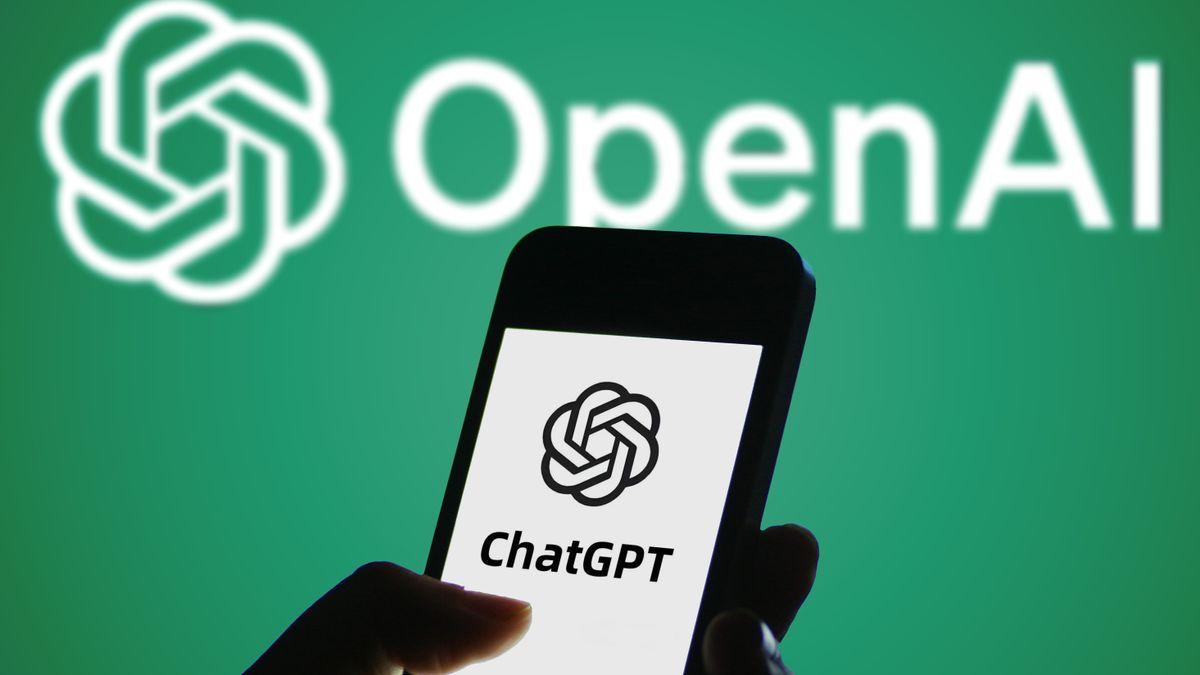Microsoft Gains Full Access to OpenAI's Custom Chip Designs in Strategic Partnership Expansion
5 Sources
5 Sources
[1]
Microsoft's plan to fix its chip problem is, partly, to let OpenAI do the heavy lifting
Microsoft is taking a page from OpenAI's playbook, literally. Bloomberg first reported that the tech giant plans to leverage its partner's custom chip development to bolster its own struggling semiconductor efforts, a move that looks increasingly pragmatic given Microsoft's lackluster performance compared to rivals like Google and Amazon. The arrangement is straightforward: OpenAI is designing AI chips with Broadcom, and Microsoft gets full access to the innovations. "As they innovate even at the system level, we get access to all of it," CEO Satya Nadella explained on a newly released interview with podcaster Dwarkesh Patel, describing plans to adopt OpenAI's designs and then extend them for Microsoft's own purposes. Under a revised partnership agreement, Microsoft secured intellectual property rights to OpenAI's chip designs while maintaining access to the company's AI models through 2032. The only carve-out? OpenAI's consumer hardware, which the ChatGPT maker presumably wants to develop and sell independently. The collaboration underscores a broader reality in tech: building cutting-edge AI chips is brutally difficult and expensive. Rather than continuing to struggle alone, Microsoft is betting that OpenAI's expertise -- plus a smartly structured contract -- can accelerate its own ambitions.
[2]
Microsoft taps OpenAI chip designs to advance its semiconductor push
OpenAI is developing custom AI chips with Broadcom and Microsoft now holds the IP rights to these designs giving it strategic control through 2032. Microsoft will leverage OpenAI's custom chip development to enhance its semiconductor efforts, according to a report by Bloomberg. OpenAI is designing AI chips with Broadcom, and Microsoft will have full access to these innovations. Microsoft CEO Satya Nadella stated on a podcast with Dwarkesh Patel that Microsoft will adopt and extend OpenAI's designs for its own purposes, noting, "As they innovate even at the system level, we get access to all of it." Under a revised partnership agreement, Microsoft secured intellectual property rights to OpenAI's chip designs. The agreement also provides Microsoft with continued access to OpenAI's AI models through 2032. The only exclusion from this agreement involves OpenAI's consumer hardware. Microsoft is utilizing OpenAI's expertise and the structured contract to accelerate its ambitions in building AI chips.
[3]
Microsoft CEO confirms a breathtaking fact about its OpenAI deal
Satya Nadella, fountain pen diehard and Microsoft CEO, has made it plain: The company has comprehensive access to the intellectual property of OpenAI's models and system design. When asked during a podcast interview how much access Microsoft had to OpenAI's intellectual property, Nadella offered a three-word response: "All of it." What "all of it" means And why that's a huge deal for Microsoft OpenAI CEO Sam Altman Nadella broke the news about an hour into a wide-ranging podcast interview released this week in sync with the announcement of new Microsoft data centers. While the news broke late last month, Nadella seized the opportunity to confirm the breathtaking fact this week. It sends a signal of Microsoft's strength and stability to corporate customers, retail consumers, and would-be competitors. The move enables the tech giant to save money and avoid costly mistakes as it develops its own AI software and hardware. Other companies with just API access to OpenAI don't have that luxury. Nadella was also quick to follow up in the interview that Microsoft, which was an early investor in OpenAI, "bootstrapped" the startup a decade ago when it was just getting started. "By the way, we gave them a bunch of IP as well to bootstrap them," he said in the interview. "This is one of the reasons why they... Because we built all these supercomputers together. We built it for them and they benefited from it, rightfully so." Meanwhile: Microsoft is expanding A data center here, a data center there Microsoft is significantly expanding the number of its Fairwater AI data centers in Atlanta and Milwaukee, which will enhance the compute power of its Azure cloud platform, as the data centers in those regions will eventually combine their work. As this expansion is happening, Microsoft now owns 27% of OpenAI's for-profit entity, or about $135 billion. "We've signed a new definitive agreement that builds on our foundation, strengthens our partnership, and sets the stage for long-term success for both organizations," stated an October 28 Microsoft press release. OpenAI is now valued at $500 billion following its latest funding round. Nadella's "all of it" comment -- made on the Dwarkesh Podcast, by the way -- is a sort of verbal confirmation of that late-October announcement, which spells out that essentially, Microsoft has exclusive rights to use OpenAI's "confidential methods used in the development of models and systems." However, those rights do not include OpenAI's planned consumer device that OpenAI CEO Sam Altman is working on with famed iPhone designer Jony Ive. When do the exclusive rights end? It will be the second-most important story that day Microsoft's exclusive rights to OpenAI's research will expire as soon as Artificial General Intelligence is achieved. It's still only a theory, but essentially, AGI will arrive at the point when AI can perform any thinking task that a human can. Who decides when we've reached the AGI milestone? For the sake of this agreement between Microsoft and OpenAI, it's an "independent expert panel." What's next In the near term, this new agreement between Microsoft and OpenAI, which spurred Nadella's matter-of-fact "all of it" response, means that Microsoft has an advantage that its competitors cannot claim. It also means that it can develop its own chip at its own pace, ensuring that it's perfect and not first. The debut of a Microsoft-made AI accelerator, such as the in-development Maia 200, means that the company can eventually stop using hardware made by Nvidia and AMD, thereby lowering the "TCO," or total cost of ownership for the company.
[4]
Microsoft to leverage OpenAI's chip designs for its own semiconductor efforts By Investing.com
Investing.com -- Microsoft plans to use access to OpenAI's custom AI semiconductor development to bolster its own chip initiatives, according to CEO Satya Nadella. "As they innovate even at the system level, we get access to all of it," Nadella said on a podcast hosted by author Dwarkesh Patel released Wednesday, as reported by Bloomberg News. "We first want to instantiate what they build for them, but then we'll extend it." OpenAI is working with Broadcom Inc. to custom-design chips and networking hardware. Microsoft has been developing its own chips but has achieved less success in this area compared to cloud competitors like Alphabet Inc.'s Google. Nadella confirmed on the podcast that Microsoft will work with designs from both OpenAI and its own team, noting that the company has the necessary IP rights to do so. This article was generated with the support of AI and reviewed by an editor. For more information see our T&C.
[5]
Microsoft to use OpenAI tech to power its next AI chips
New Fairwater datacentres with faster systems and low-water cooling will power advanced AI training and deployment. Microsoft is preparing for its next major leap in artificial intelligence by partnering with OpenAI to incorporate their custom chip designs into its in-house semiconductor plans. This shows how seriously Microsoft takes the global competition in AI. CEO Satya Nadella said Microsoft will leverage OpenAI's hardware research to integrate chip designs optimised for training large, complex AI models. The initiative reflects a broader industry trend, as tech giants worldwide develop specialised processors to reduce reliance on third-party suppliers while improving the speed and efficiency of AI operations. By developing its own chips, Microsoft aims to gain greater control over performance, reduce long-term costs, and accelerate breakthroughs in model training. This partnership also signals a deeper alignment between the two companies as AI innovation rapidly intensifies. Also read: OnePlus 16 display details leaked ahead of OnePlus 15 launch: Here's what we know Nadella said that Microsoft will fold OpenAI's system-level chip designs into its own in-house work. This includes processors and networking hardware that OpenAI has been developing with Broadcom. Microsoft plans to refine these designs so they can be produced at a large scale and then expand them further under its own intellectual property. Also read: Google Pixel 9 Pro price drops by over Rs 25,000 on Amazon: How this deal works The updated agreement strengthens the already close relationship between the two companies. Microsoft gains access to hardware specifically suited for training OpenAI's large models, while OpenAI benefits from Microsoft's global cloud infrastructure. Nadella called the alignment "strategic", noting that OpenAI's design strengths will help speed up Microsoft's semiconductor goals. Microsoft's new Fairwater datacentres will play a central role in this push, as these sites function as connected hubs for training and deploying the next generation of AI models. One facility in Atlanta uses a new chip and rack design that allows very high data processing speeds. It also includes advanced cooling systems that use almost no water, a sharp contrast to older data centres that require large amounts of it. Also read: Pixel users may finally be able to remove the At a Glance widget from the home screen, confirms Google As per Scott Guthrie, Microsoft's Cloud and AI group lead, the aim is not only to add more hardware but to build systems that work together smoothly. Microsoft says it has spent years improving the architecture and networking behind large AI training so customers can rely on stable performance at scale. This approach sets Microsoft apart from rivals that develop chips mostly for use within their own ecosystems.
Share
Share
Copy Link
Microsoft secures comprehensive intellectual property rights to OpenAI's custom AI chip designs through 2032, leveraging the partnership to accelerate its semiconductor ambitions and compete with rivals like Google and Amazon.
Microsoft Secures Comprehensive Access to OpenAI's Chip Technology
Microsoft has formalized a strategic arrangement granting the tech giant comprehensive access to OpenAI's custom AI chip designs, marking a significant development in the companies' partnership. CEO Satya Nadella confirmed the breadth of this access during a podcast interview with Dwarkesh Patel, stating unequivocally that Microsoft has access to "all of it" when asked about OpenAI's intellectual property
1
3
.
Source: Digit
Under the revised partnership agreement, Microsoft secured intellectual property rights to OpenAI's chip designs while maintaining access to the company's AI models through 2032. The arrangement provides Microsoft with rights to OpenAI's "confidential methods used in the development of models and systems," with the notable exception of OpenAI's planned consumer hardware devices
2
3
.OpenAI's Chip Development with Broadcom
OpenAI is currently developing custom AI chips in collaboration with Broadcom, focusing on processors and networking hardware specifically optimized for AI workloads. Microsoft's access to these innovations allows the company to adopt OpenAI's designs and then extend them for its own purposes. "As they innovate even at the system level, we get access to all of it," Nadella explained, describing plans to first instantiate what OpenAI builds before extending the technology further
1
4
.
Source: MakeUseOf
The collaboration addresses the brutal difficulty and expense of building cutting-edge AI chips. Rather than continuing to struggle independently, Microsoft is leveraging OpenAI's expertise through a strategically structured contract to accelerate its semiconductor ambitions
1
.Addressing Microsoft's Semiconductor Challenges
Microsoft's decision to leverage OpenAI's chip development reflects the company's lackluster performance in semiconductors compared to rivals like Google and Amazon. While Microsoft has been developing its own chips, including the in-development Maia 200 AI accelerator, the company has achieved less success in this area compared to cloud competitors
1
3
.The partnership enables Microsoft to develop its own chip at its own pace, ensuring quality over speed while eventually reducing dependence on hardware from Nvidia and AMD. This approach could significantly lower the total cost of ownership for the company's AI infrastructure
3
.Related Stories
Infrastructure Expansion and Implementation
Microsoft is simultaneously expanding its AI infrastructure through new Fairwater data centers in Atlanta and Milwaukee, which will enhance the compute power of its Azure cloud platform. These facilities feature advanced chip and rack designs enabling high data processing speeds, along with innovative cooling systems that use minimal water compared to traditional data centers
5
.Scott Guthrie, Microsoft's Cloud and AI group lead, emphasized that the goal extends beyond adding hardware to building integrated systems that work seamlessly together. Microsoft has invested years in improving the architecture and networking infrastructure for large-scale AI training, providing customers with reliable performance at scale
5
.Partnership Terms and Future Implications
Microsoft currently owns 27% of OpenAI's for-profit entity, valued at approximately $135 billion, with OpenAI's total valuation reaching $500 billion following its latest funding round. The exclusive rights to OpenAI's research will expire when Artificial General Intelligence is achieved, as determined by an independent expert panel
3
.Nadella noted that Microsoft "bootstrapped" OpenAI a decade ago, providing the startup with intellectual property and building supercomputers together. "We gave them a bunch of IP as well to bootstrap them," he explained, highlighting the reciprocal nature of the relationship
3
.
Source: TechCrunch
References
Summarized by
Navi
[1]
[4]










